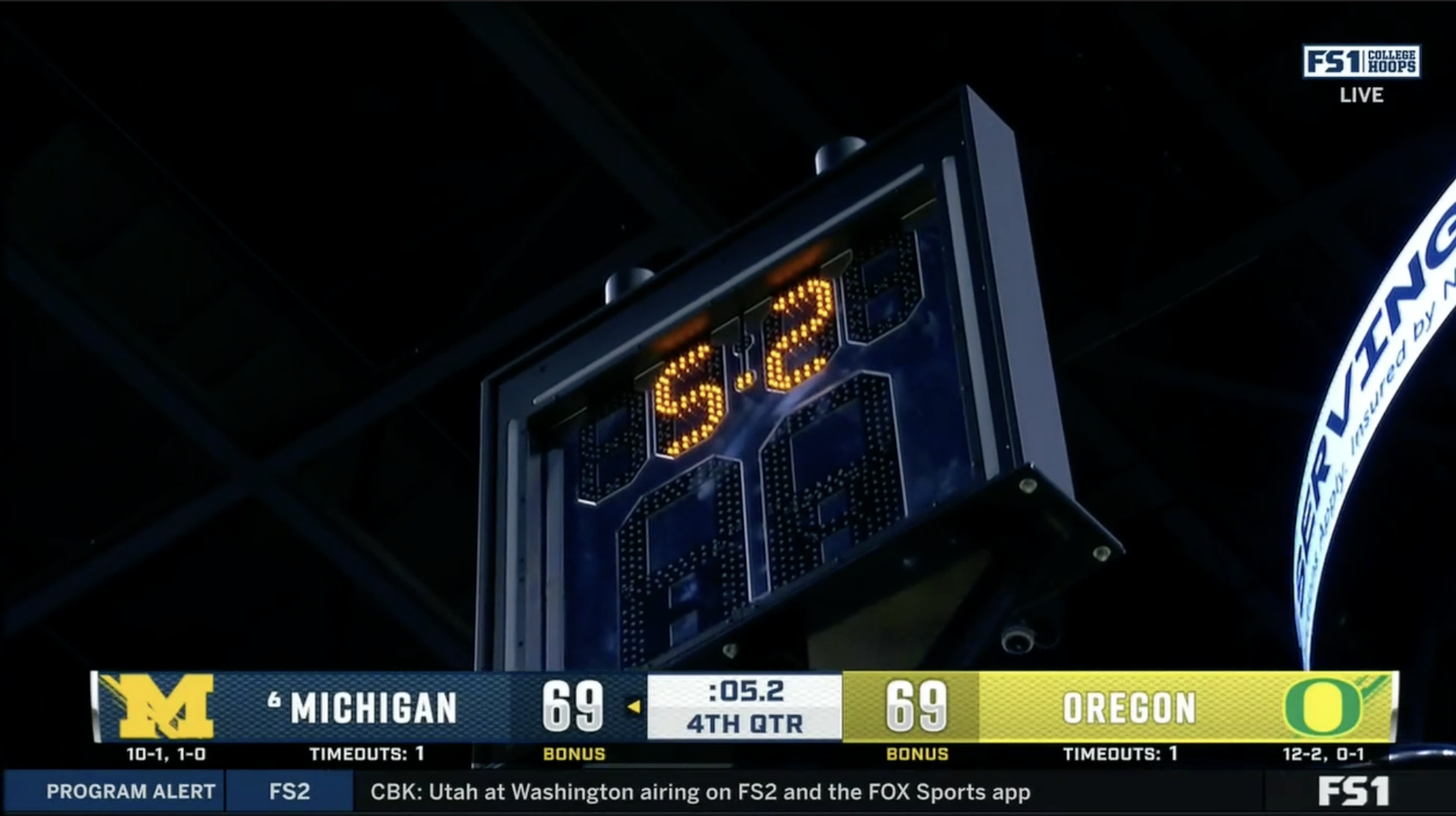F1: The Movie is not a good sports movie, but it also doesn't try very hard to be. Instead, it is a superhero flick dressed in a sports movie livery. Like a superhero movie, F1: The Movie primarily rewards nerds—in this case, fans who know too much about Formula 1—with opportunities to tap into the dopamine vault of recognition. There is no shortage of figures to recognize: the voices, and later profiles, of commentators David Croft and Martin Brundle; a fatuous aside about how that Max Verstappen guy's really good, huh; a shot of Lewis Hamilton's bulldog Roscoe happily trundling down the paddock; the phrase "shitbox"; Guenther Steiner, enough said.
Equally recognizable is the visual language, which successfully mimics an F1 television broadcast. Each race is introduced with the name printed in F1's proprietary font and a stylized diagram of the circuit stamped over an overhead helicopter shot. Much of the race footage is adapted from shots of the 2023 and 2024 F1 Championship, which means few new angles to work with, but plenty for fans to recall. There is the onboard shot, peeking above the bars of the halo. There is a shot of the drivers' helmets, seated on the grid before the start. Do the cars look like they're the fastest in the world? Not really, which proves a commitment to the aesthetics of the source material.
While the look of an F1 race may not translate particularly well to the big screen, writer Ehren Kruger and co-writer/director Joseph Kosinski had a chance to leverage the narrative possibilities of a sport that lends itself to rooting for the underdog. For the vast majority of teams and drivers, the actual championship is background noise; for reasons incomprehensible to the average person, these drivers risk their lives each race with no shot at ultimate glory. Enter American driver Sonny Hayes, who may as well just be Brad Pitt. Hayes briefly raced in F1 during the Senna–Schumacher era before a crash derailed his life. After spending a decade or so self-destructing, and another as a vigilante driver for events like the 24 Hours of Daytona, he rejoins the pinnacle of motorsport as a favor for an old friend and former teammate. This friend owns a team called APXGP (pronounced Apex GP), which has yet to score a single point in F1. If they do not win one race by the end of the season, the friend will lose his team.
In a sports movie, this washed-up has-been coming back for one last shot might tangle with the ultimate cruelty of F1: a fundamental lack of control. No matter how talented or tactically smart, drivers in shitboxes are fighting against F1's inequitable technological hellscape as much as they are fighting other drivers on the track. Upset wins can occur only through a small accumulation of miracles—they should never have happened and may never happen again, which is why they matter so much to the drivers who earn them.
But Hayes is not a race car driver. He is a superhero. He is an American cowboy, joining his broadly European team and singlehandedly turning it around. He serves as driver, engineer, strategist. "Why don't we make a car that can follow others closely through corners?" Hayes asks. No one, including the team's technical director, or for that matter anyone else on any other team, has considered that as a possibility. Years of aerodynamic struggle are fixed in one upgrade package; perhaps Hayes and APXGP can share their findings with the current F1 grid. Hayes does not respect strategy calls. He parks in the pit box until his team relents and finally gives him the tire type he wants, and, of course, Hayes is correct. He invents a new driving style called "intentionally causing a minor collision multiple times a race" in order to trigger safety cars to benefit his team.
By turning Hayes into an invincible wrecking ball that can singlehandedly win a race, F1: The Movie undermines its own emotional and physical stakes. It asks the viewer to treat APXGP as an underdog team, and their final win as a triumph. But theoretically guaranteed failure is the crux of the underdog win, and APXGP and Hayes have too much control over their circumstances to fail. By the final race of the season, the APXGP car has race-winning potential; their win, as much as it is ascribed to a red-flag miracle, results after Hayes collides with George Russell.
At the same time, the movie asks the viewer to believe and care that the drivers' lives are at risk while Hayes intentionally crashes his way through the field. Hayes has a post-sex monologue on why he still races after his life-threatening crash, in which he displays a level of self-awareness that might even satisfy David Foster Wallace; unfortunately, after watching Hayes cause three collisions in one race, it's very easy to dislike this man. So long as crashes can be calculated to carry zero risk, there are no fine, twitchy margins separating freak accidents from normal racing. In order to generate any source of danger, Hayes's rookie teammate, Joshua Pearce (Damson Idris), has to be launched into a flying, spinning fireball crash at the Parabolica in Monza. Even then, it is predictable, and ultimately meaningless—the crash occurs in rainy conditions after Pearce was explicitly forewarned by Hayes, and it is obvious that Pearce will survive.
Then again, an accurate representation of modern F1 racing would make for a bad movie. This is because modern F1 racing is, with rare exceptions, very boring. No one wants to waste any minute of F1: The Movie's 156-minute runtime explaining terms like "sprint race," "ground effect," or "undercut." The modern-day F1 enjoyer requires a mildly poisoned brain that can enjoy caring about tire deltas and watching numbers tick up or down on a timing screen. She has to either gleefully embrace or be able to sufficiently ignore the rot of a fundamentally indefensible enterprise.
The movie nearly negotiates with the uglier part of F1 with a feint toward progressiveness. Pearce, the rookie teammate, is black, and APXGP's technical director, Kate McKenna (Kerry Condon), is a woman, the first to occupy such a role in F1. Thanks to the driver lineup, we know the movie is canonically set in 2023, when Lewis Hamilton was, and is still, the first and only black driver on the grid, and there were and are no female technical directors, but OK, it wasn't like Brad Pitt was playing bumper cars on the grid either. Suspension of disbelief.
Pearce's presence suggests that in this alternate universe, F1 has moved past racism—his struggles as a rookie driver lie purely with whether or not he will have a seat next year, and the modern dilemma of "growing a brand"—yet is still plagued by sexism. McKenna is portrayed as having a point to prove because of her gender, but that won't stop F1's fictional first female technical director sleeping with Sonny Hayes–cum–Brad Pitt. Grid girls are long gone from F1, but even in this progressive alt-2023, there are still some girls on the grid for drivers to have sex with. The advancement being, I suppose, that this one came to the sport by way of a job at Lockheed Martin (every superhero needs a love interest with dubious ties to the military-industrial complex).
If the narrative arc is confused, that's because it's less important than the F1 drivers who cameo, who were invited to a private screening, and who attended a premiere party in New York City. (Two exceptions: Lewis Hamilton's attendance was also due to his role as a producer on the film, and Max Verstappen has better things to do, like play iRacing.) The movie portrays a flashier version of F1, and in return F1 advertises the movie in the middle of a race, set smartly on the slow hairpin of the Canadian Grand Prix. The nature of racing sponsors makes for easy product placement that can be plastered on racesuits, cars, helmets; the appropriation of standard television camera angles that these advertisements are built for makes them even easier to display. If you want a modern racing movie, go watch Ford v Ferrari. This is Licensing: The Movie.
Access is what makes F1: The Movie what it is, and so it is no surprise that it says nothing critical or interesting about the enterprise. The final racing scene that F1 leaves you with is the Abu Dhabi Grand Prix. This is not a contrivance or an inaccuracy: The Abu Dhabi Grand Prix will contractually be the final race of every F1 season until 2030. Here come your typical broadcast shots: lingering overhead shots of the beautiful Yas Marina circuit that can double as travel advertisement; an onboard during the race that shows the Crypto.com banners on an overpass. A movie pretending to be about sport while it bends to capitalist imperative—well, maybe it is possible to derive some broader meaning after all.







